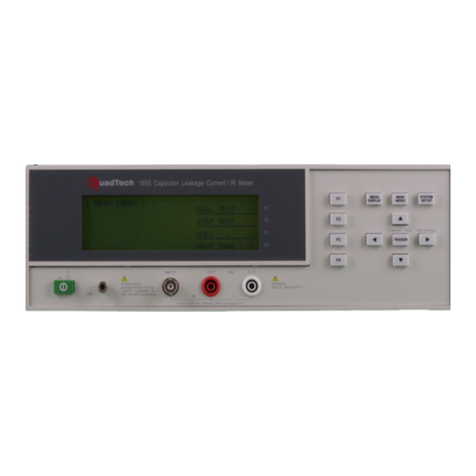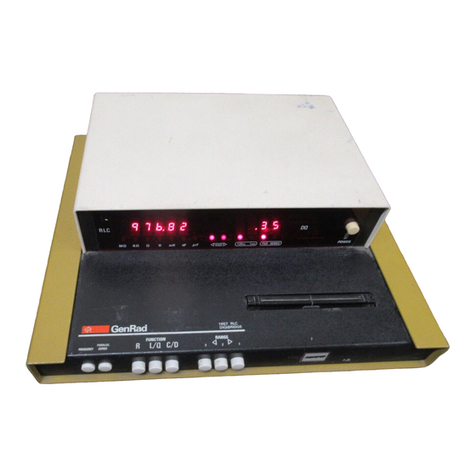
Page 4 of 110 150821/A4
Contents - continued
Operation - Section 2 – Continued
2.4 MEAS DISPLAY...........................................................................................36
2.4.1 FREQuency .......................................................................................37
2.4.2 LEVEL ..............................................................................................37
2.4.3 PARAmeter .......................................................................................37
2.4.4 RANGE .............................................................................................40
2.4.5 SPEED/Accuracy ..............................................................................41
2.4.6 TRIGger ............................................................................................46
2.4.7 BIAS Voltage ....................................................................................46
2.4.8 BINNING ..........................................................................................47
2.4.9 COMPARE .......................................................................................47
2.4.10 BIAS Current ....................................................................................48
2.5 MAIN INDEX ..............................................................................................50
2.5.1 BINNING ..........................................................................................50
2.5.2 STORE ..............................................................................................53
2.5.3 RECALL ...........................................................................................54
2.5.4 COMPARE .......................................................................................55
2.5.5 CORRECTION .................................................................................56
2.6 Connection To Device Under Test ................................................................60
2.7 Measurement Procedure.................................................................................68
Interface - Section 3
3.1 IEEE-488 Interface ........................................................................................69
3.1.1 Pin Configuration...............................................................................69
3.1.2 IEEE-488 Interface Function Codes and Messages...........................71
3.1.3 IEEE-488 Interface Commands .........................................................76
3.1.4 IEEE-488 Command Format ............................................................78
3.1.5 IEEE-488 Commands - Detailed ......................................................79
3.1.6 Binning Example ..............................................................................92
3.1.7 Compare Example .............................................................................93
3.1.8 Sample IEEE BASIC Program .........................................................94
3.2 Handler Interface ..........................................................................................95
3.2.1 Handler Pin Assignments for Binning Operation .............................100
3.2.2 Handler Pin Assignments for Compare Operation ...........................101
3.3 Bias Voltage Connector ................................................................................102
Service & Calibration - Section 4
4.1 General...........................................................................................................105
4.2 Instrument Return ..........................................................................................105
4.3 Calibration......................................................................................................105
4.3.1 1730 Verification Procedure .............................................................106
4.3.2 1730 Verification Data Sheet ............................................................108






























